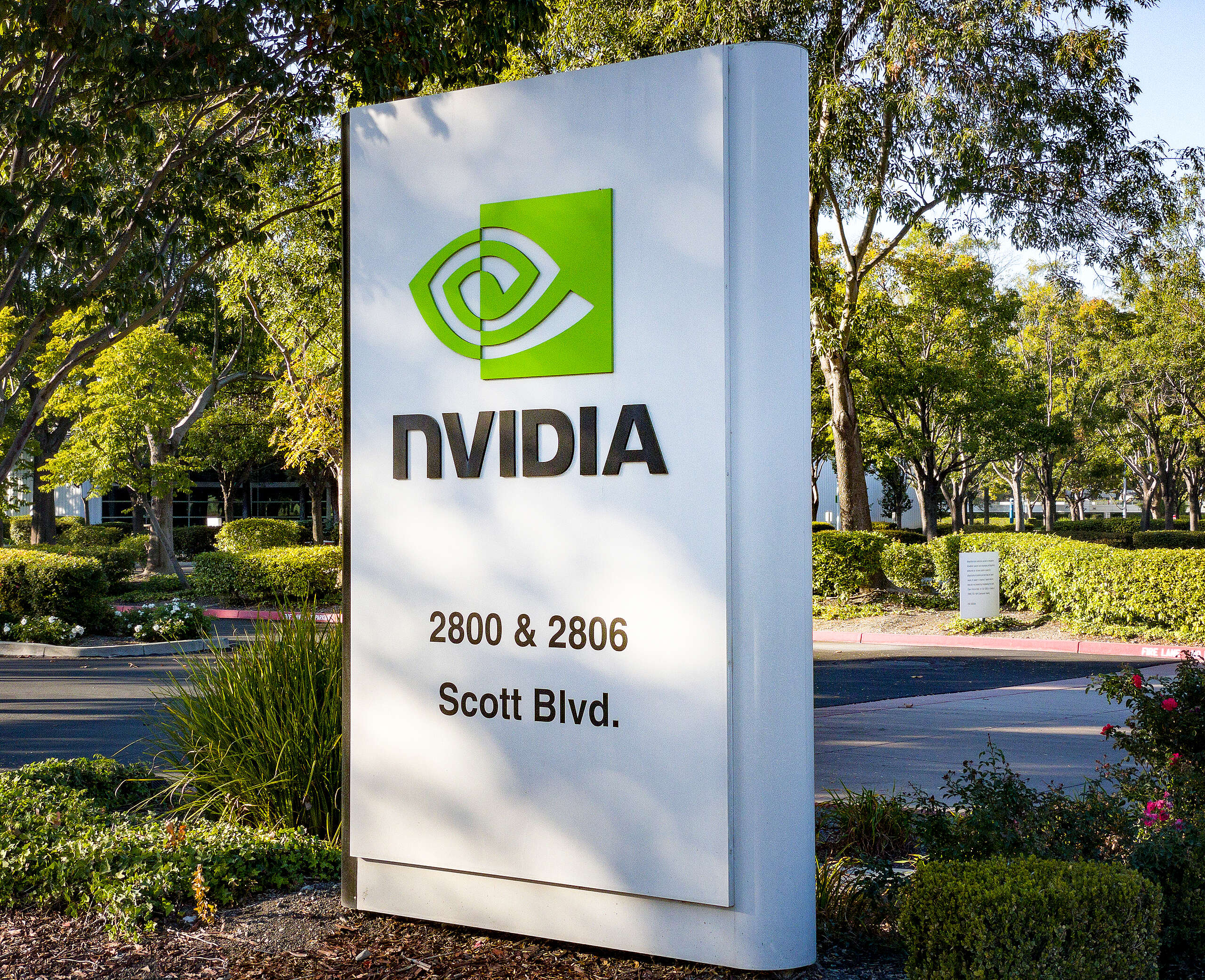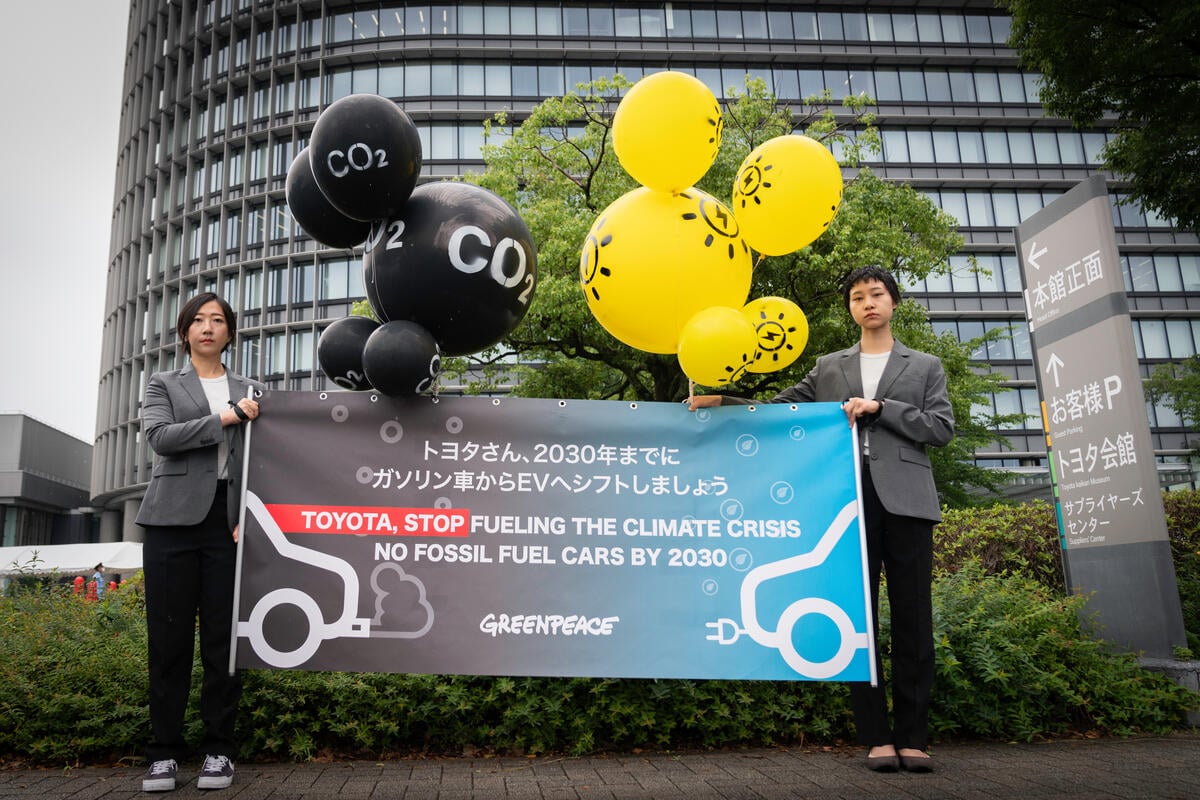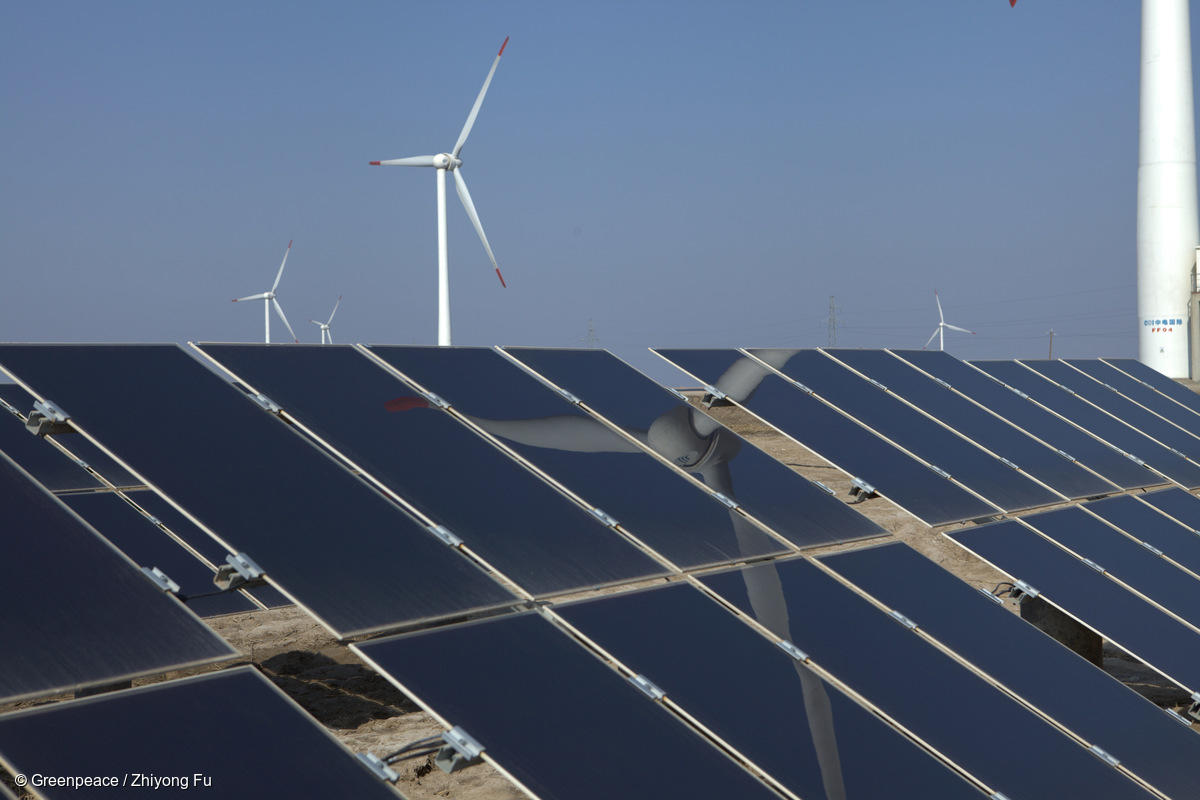On April 16, Apple released its 2025 Environmental Progress Report.
In response, Greenpeace East Asia climate and energy campaigner Rachel Yu said:
“The electronics industry must speed up its transition to renewable energy across the supply chain. Suppliers to Apple and other major tech companies need to stop pursuing false solutions and using excuses to delay climate action.
According to Apple’s report, Apple has targeted 100 percent renewable energy across its supply chain by 2030 and has taken steps toward reaching this goal. Apple’s supply chain carbon emissions from purchased goods and services decreased by 13 percent between 2023 and 2024, according to Greenpeace calculations based on the report. However, it’s critical to also examine data for Apple’s biggest suppliers. At the end of 2023, Pegatron, a key final assembly supplier to Apple, reported sourcing just 47 percent of its electricity from renewable energy. Moreover, Pegatron has not issued any commitment to reach 100 percent renewable energy, which is becoming the industry standard.
Apple’s sustainability report claims that ‘long-standing energy policies and infrastructure that incentivize the use of fossil fuels like coal or gas can make it difficult to bring new renewable energy online in certain regions.’ This statement obscures the key role that corporations play in the expansion of electricity generation capacity. Electronics manufacturers are some of the most influential companies in East Asia. They need to both advocate for governments to increase renewable energy capacity, particularly from wind and solar, and to invest directly in renewable energy themselves. For example, Pegatron Chairman Tung Tzu-Hsien serves as the deputy convener of Taiwan’s climate change committee. As he occupies an influential role in climate and energy policymaking, Mr. Tung should promote the scale-up of wind and solar capacity and use his role as chairman to set a positive example. He should not allow Pegatron’s climate commitments to fall behind those of rivals like Foxconn.
Over the past year, Apple has taken steps to increase the availability of renewable energy capacity in East Asia, leaving few excuses left for suppliers like Pegatron to avoid setting ambitious climate targets. On March 24, 2025, Apple invested an additional 99 million USD in its Clean Energy Fund in China Mainland. In 2023, a full 77.5 percent of Pegatron’s electricity consumption occurred in China Mainland, where ample opportunities exist for renewable energy procurement, including the signing of Power Purchase Agreements (PPAs) and direct investment in renewables like wind and solar. Pegatron continues to delay climate action, not due to a lack of available options, but rather due to a lack of initiative.
Unfortunately, in East Asia, electronics manufacturing is driving an increase in fossil fuel capacity, as well as associated emissions and air pollution. In 2024, South Korea’s government approved the construction of a 1 gigawatt (GW) liquid natural gas (LNG) combined heat and power plant for chipmaker SK hynix. South Korea’s government also plans to build 3 GW of LNG capacity for Samsung. In Taiwan, the Taiwan Power Company (Taipower) has used increased power demand from the semiconductor and AI sectors as a justification to expand LNG projects and grid infrastructure.
As our reliance on technologies like AI grows, emissions from electronics manufacturing are soaring. If companies like Pegatron hope to avoid a major increase in greenhouse gas emissions and air pollution, they need to take steps to increase their procurement of renewable energy. Pegatron and other electronics suppliers must target 100 percent renewable energy by 2030.”
END
Media Contact
Erin Newport, International Communications Officer (Taipei), Greenpeace East Asia, +886 958 026 791, [email protected]



